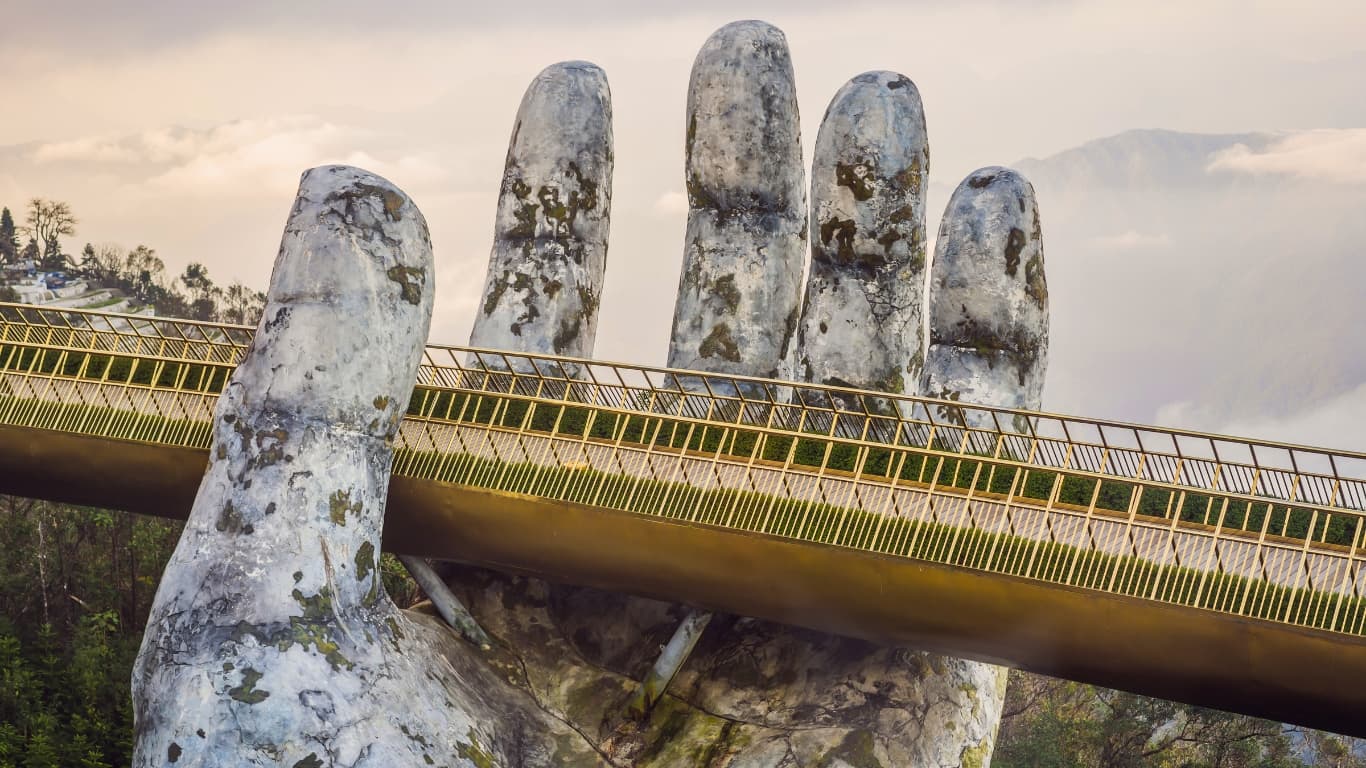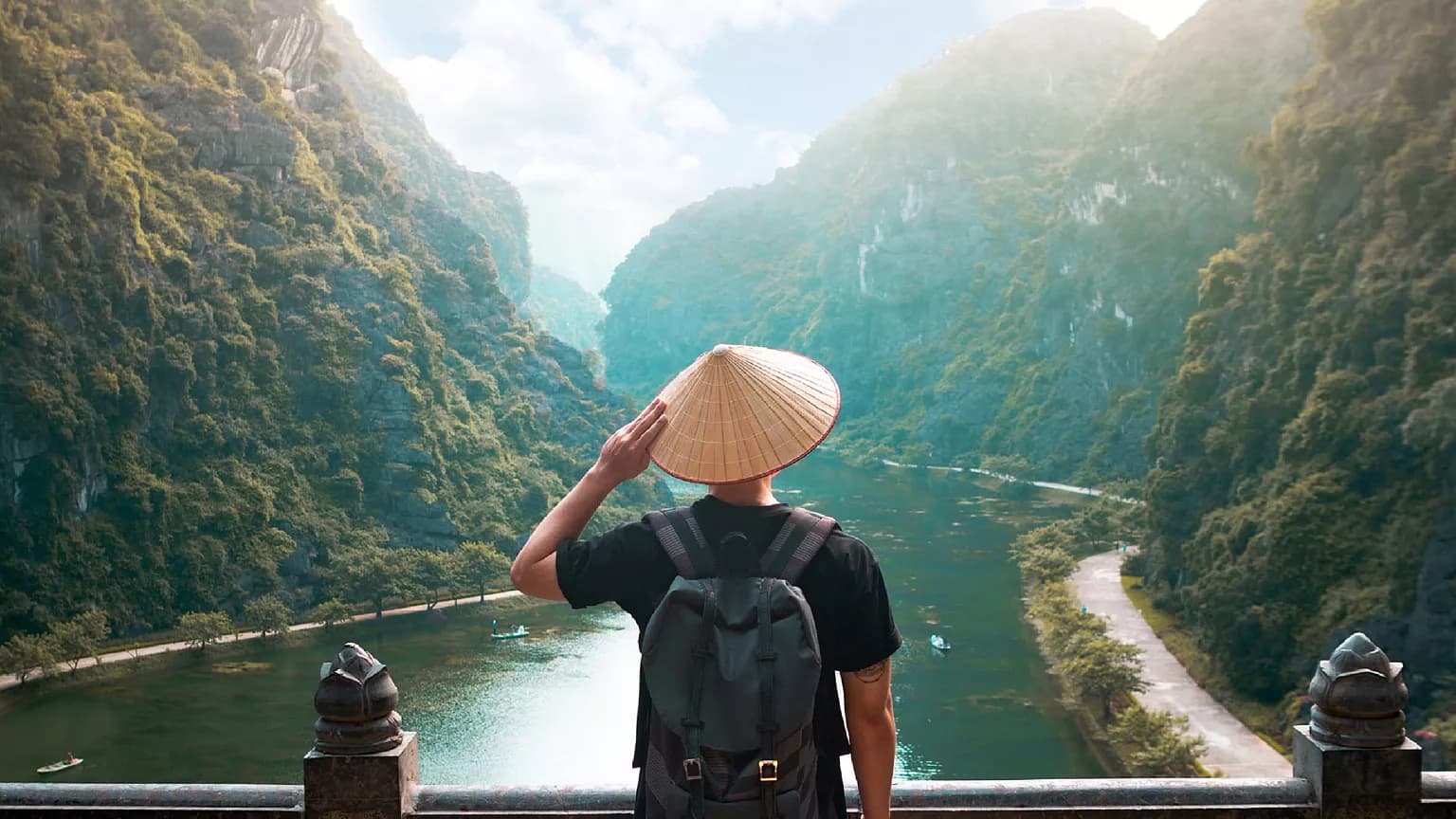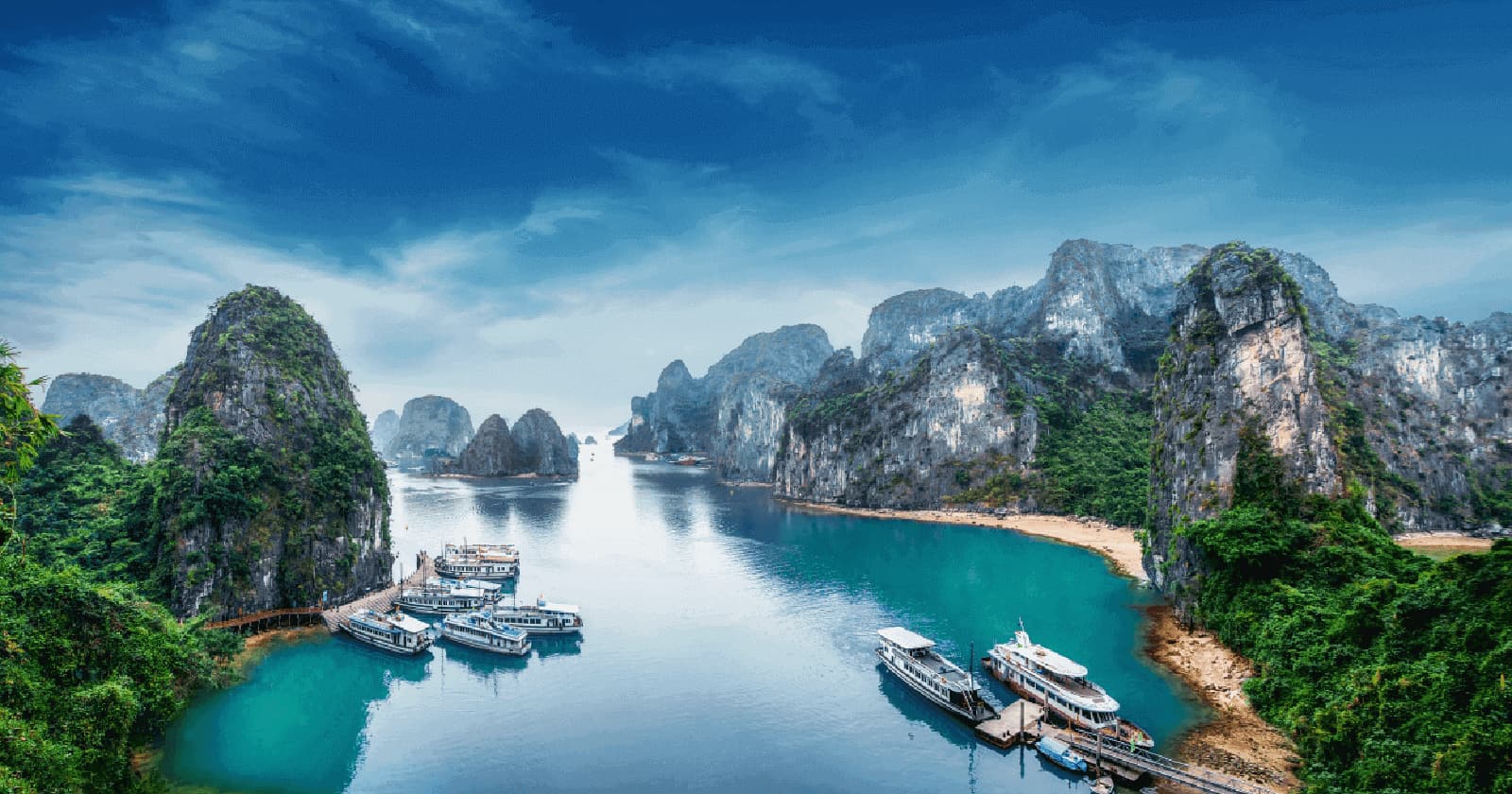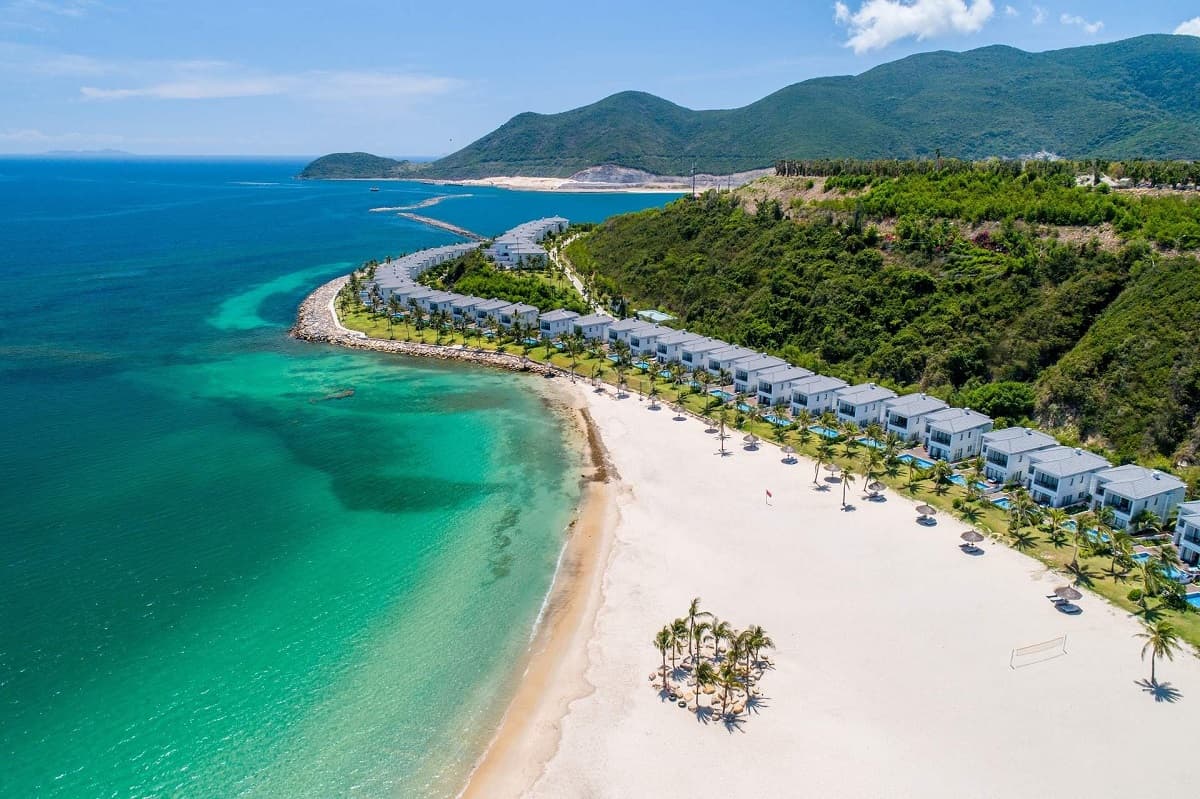Vietnam is known not only for its rich culture, vibrant cities, and delicious cuisine but also for its captivating climate. Stretching across over 1,600 kilometers from north to south, Vietnam enjoys a diverse tropical and subtropical climate that offers something unique year-round. This varied climate is one of the key reasons why millions of foreign tourists are drawn to this Southeast Asian gem. Whether it’s escaping harsh winters, chasing the sun, or exploring misty mountain landscapes, Vietnam’s climate attracts foreign tourists seeking diverse experiences.
In this article, we explore in depth how Vietnam’s climate plays a significant role in boosting international tourism, what makes it so appealing, and what each region has to offer throughout the year.

Why Vietnam’s Climate Attracts Foreign Tourists from Around the World
Vietnam’s Climate Zones: A Diverse Natural Appeal
Vietnam’s climate can be roughly divided into three main zones:
-
Northern Vietnam (Hanoi, Sapa, Ha Giang) – Humid subtropical climate with four distinct seasons.
-
Central Vietnam (Da Nang, Hue, Hoi An) – Tropical monsoon climate with hot dry summers and wet winters.
-
Southern Vietnam (Ho Chi Minh City, Mekong Delta) – Tropical savanna climate with wet and dry seasons.
This geographical and climatic diversity allows foreign travelers to pick their preferred weather type any time of the year.

Vietnam’s Climate Zones: A Diverse Natural Appeal
Why Vietnam’s Climate Appeals to Foreign Tourists
Escape from Harsh Winters
One of the most compelling reasons Vietnam’s climate attracts foreign tourists is its warm temperatures during the Western winter. Travelers from colder regions such as Europe, North America, or East Asia often look for warm getaways from November to February.
Southern Vietnam, especially Ho Chi Minh City and the Mekong Delta, enjoys dry and sunny days during this period, making it ideal for winter escapees. Beach destinations like Phu Quoc or Nha Trang offer perfect weather for sunbathing and relaxation while much of the northern hemisphere is covered in snow.

Why Vietnam’s Climate Appeals to Foreign Tourists
Diverse Seasonal Experiences
Vietnam’s varied geography means travelers can experience different seasons in one trip. While spring blooms in the North with cherry blossoms and peach flowers in Hanoi or Sapa, the South remains evergreen with year-round tropical weather.
This diversity allows tourists to trek foggy mountains in Sapa in the morning, enjoy the sunny beaches of Da Nang in the afternoon, and sip cocktails in Ho Chi Minh City by night—all in different climates within one country.
Extended Travel Opportunities Year-Round
Vietnam doesn’t have a single “best” season. Each region peaks at different times of the year:
-
Spring (February–April): Great for North Vietnam exploration—Hanoi’s festivals, Sapa’s terraced fields.
-
Summer (May–August): Ideal for beach vacations in Central Vietnam.
-
Autumn (September–November): Beautiful foliage and cool breezes in the North.
-
Winter (December–January): Perfect time to visit the South’s dry season.
This means Vietnam always has something suitable for tourists no matter when they plan their trip.
Ideal for Outdoor Activities
Foreign travelers seeking outdoor adventures like hiking, kayaking, or biking find Vietnam’s climate supportive and enjoyable. Cool spring days in the North are perfect for trekking in the highlands or visiting national parks like Cuc Phuong or Ba Be Lake. The warm dry season in the South makes for pleasant river cruises in the Mekong Delta or cycling around the rice fields of Ben Tre.
Even water activities like snorkeling, diving, and island hopping are popular in Vietnam’s coastal regions thanks to long periods of sunshine and calm seas, especially between March and September.

Ideal for Outdoor Activities
Regional Climate Highlights for Tourists
Northern Vietnam
Best Time to Visit: October to April
The North offers a classic four-season climate. Winter (December–February) is cool, even cold in places like Sapa and Ha Giang. This appeals to travelers who miss the chill without enduring harsh snowstorms. Spring is particularly popular due to the blooming flowers and festive atmosphere during Tet (Vietnamese Lunar New Year).
In summer, the countryside becomes lush and green, attracting nature lovers and photographers. Autumn is perhaps the most romantic season, with clear blue skies and golden rice fields.
Central Vietnam
Best Time to Visit: February to August
Central Vietnam has a more tropical, hot climate. Cities like Da Nang, Hue, and Hoi An are dry and sunny in the first half of the year. This region is famous for its beaches and historical sites.
During the dry season, tourists enjoy calm seas, making it ideal for swimming, diving, and fishing. Even the rainy season (September–November) is mild enough for cultural tourism, with fewer crowds and lush landscapes.
Southern Vietnam
Best Time to Visit: November to April
Southern Vietnam experiences little temperature variation, but two distinct seasons: dry and wet. The dry season, especially from December to March, is perfect for exploring Ho Chi Minh City, the Mekong Delta, and island paradises like Phu Quoc.
Foreign tourists appreciate the predictability of the southern climate, with plenty of sunshine, low humidity, and minimal rainfall during these months. Even the wet season is relatively easy to navigate, with brief afternoon showers and clear mornings.
Climate-Driven Tourism Trends
Rise in Winter Sun Tourism
Many European tour operators now offer Vietnam holiday packages specifically targeted at winter travelers. Vietnam competes with Thailand and Bali as a top tropical winter destination, but with the advantage of more affordable travel costs and fewer crowds in many areas.
Growth of Ecotourism and Green Travel
Vietnam’s climate fosters rich biodiversity—from tropical forests to mangrove swamps and coral reefs. This makes it ideal for eco-conscious tourists. As the global trend toward sustainable tourism grows, Vietnam’s mild climate and lush ecosystems are becoming prime attractions.

Climate-Driven Tourism Trends
Health and Wellness Retreats
The tropical warmth of Vietnam is perfect for health retreats. Many foreign visitors are turning to yoga retreats, meditation centers, and traditional herbal therapy resorts, especially in areas like Da Lat, Hoi An, and Ninh Binh, where the climate is serene and nurturing.
Tips for Foreign Tourists Regarding Vietnam’s Climate
-
Pack smart: Lightweight clothing for the South, but warmer layers if visiting the North in winter.
-
Be weather-aware: Typhoon season (usually August–October) can affect travel plans in Central Vietnam.
-
Use sunscreen and stay hydrated: UV index can be high, especially during peak summer.
-
Check local forecasts: Weather can vary significantly even within a short distance.

Tips for Foreign Tourists Regarding Vietnam’s Climate
Vietnam’s climate attracts foreign tourists not just for its warmth but for its variety, predictability, and capacity to cater to all types of travelers. Whether you’re a beach bum, an adventure seeker, a cultural explorer, or a wellness traveler, Vietnam offers the right weather at the right time somewhere in the country.
As more travelers seek destinations with year-round appeal and natural diversity, Vietnam stands out for its climate-driven charm. From the misty mountains of the North to the sun-kissed beaches of the South, the country continues to welcome global visitors with open arms—and perfect weather.
